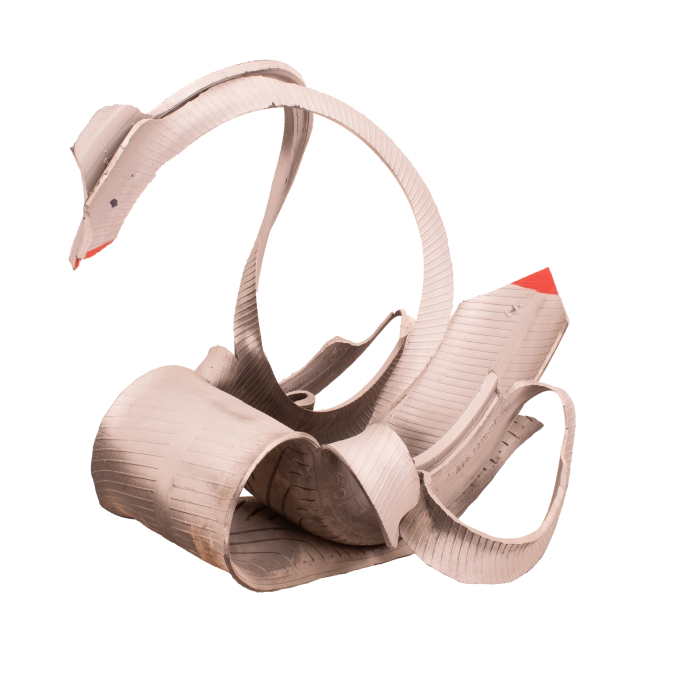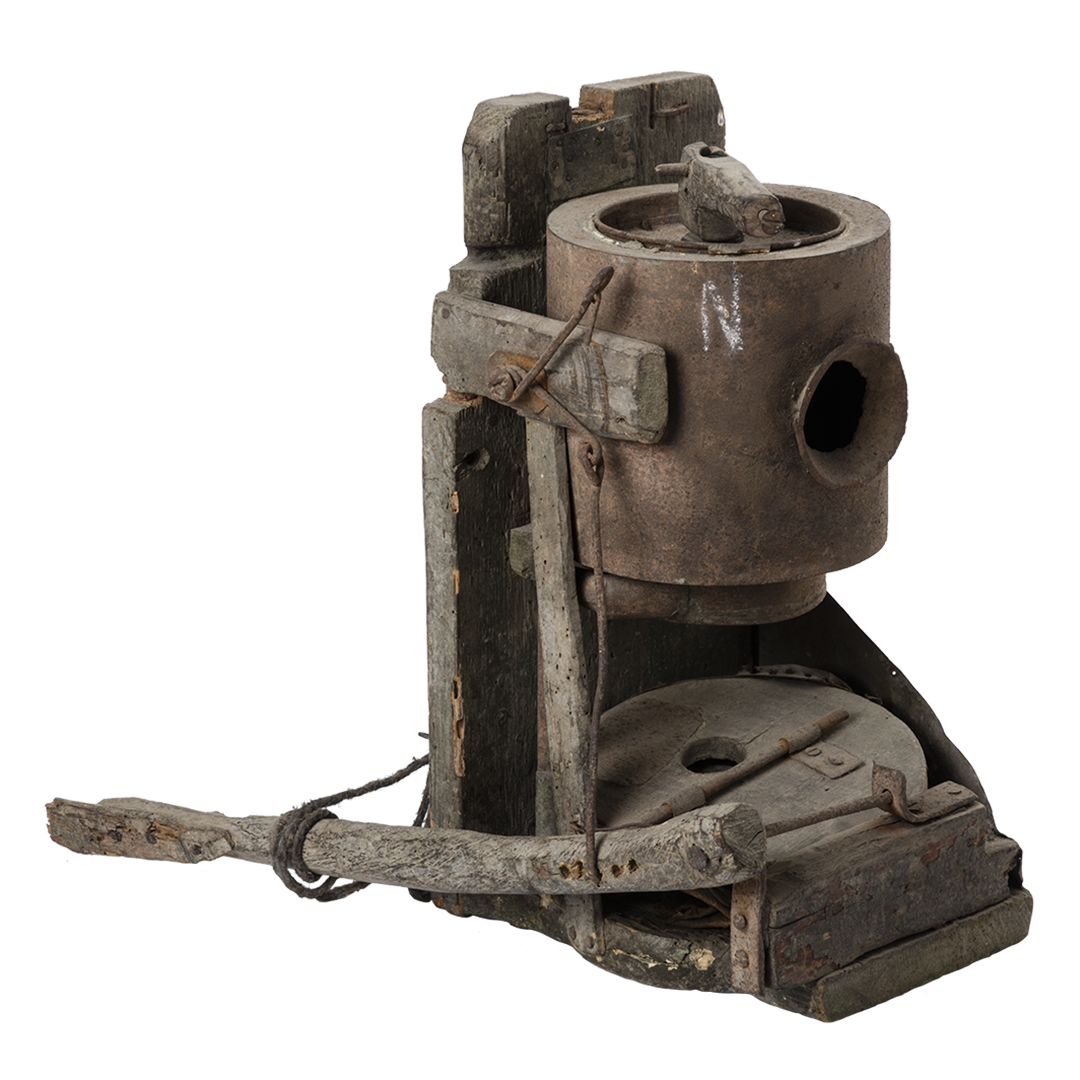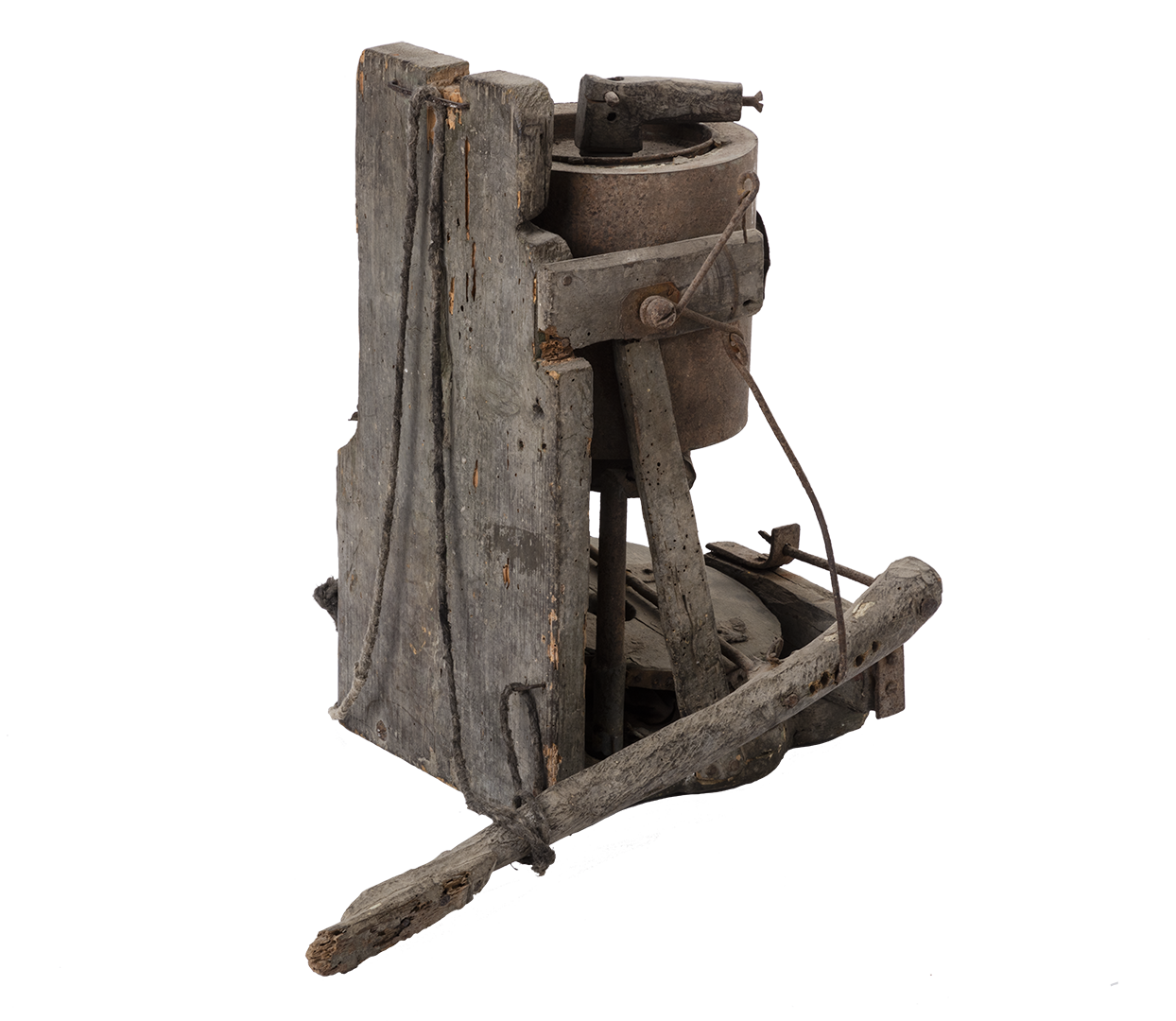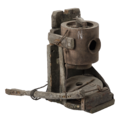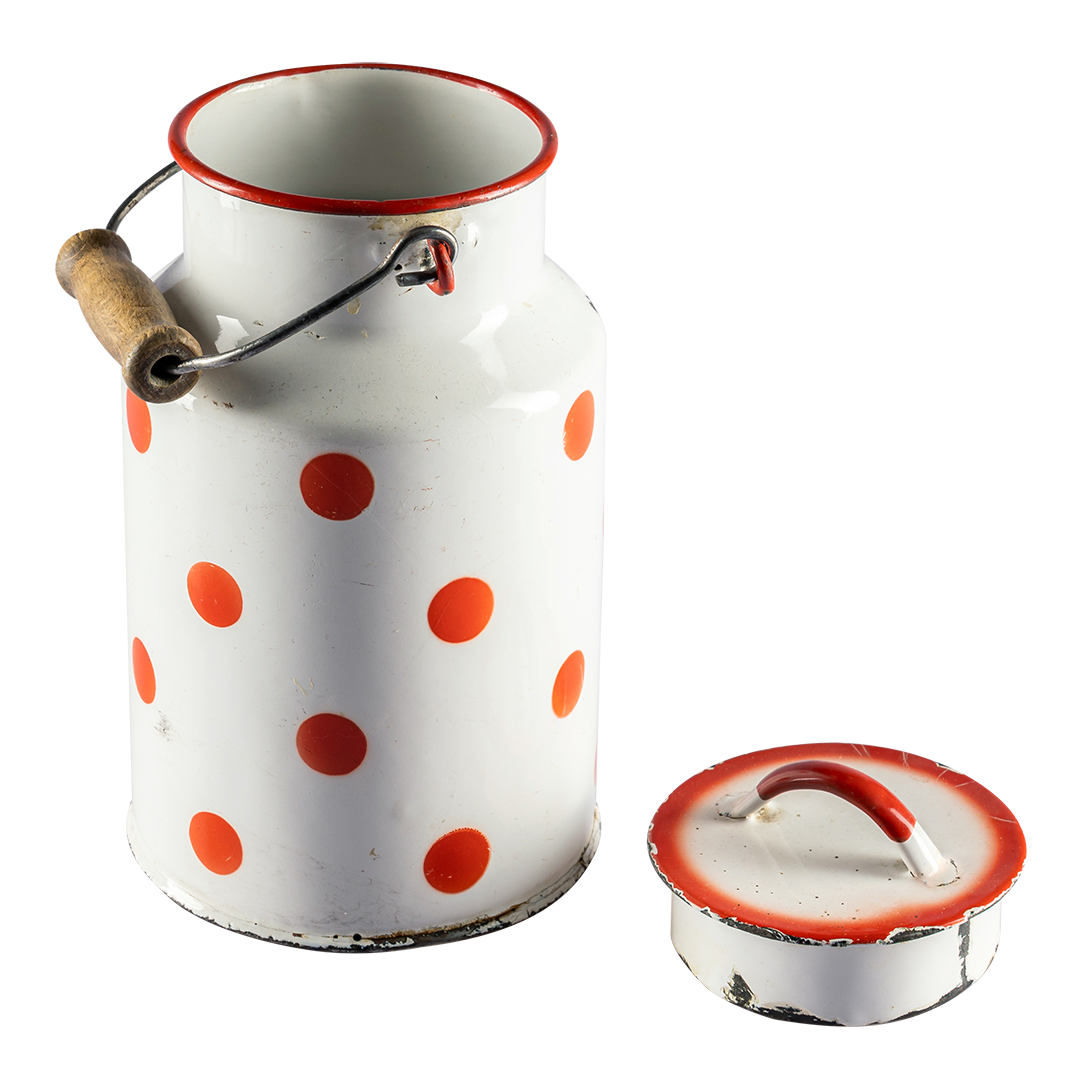Artist/Maker Unknown
Date Production/Creation
20th century
Entry in the museum collection
Terminus post quem 1950
Place of origin
Ozzano Taro, Collecchio, Parma, Emilia Romagna, Italy, Europe
Current location
Ettore Guatelli Museum foundation, Ozzanno Taro, Italy
Material
Assembly of from recycled wood, tin, rope, hides and wire
Dimension
Cm: 42 (height) - 47 (width) - 26 (length)
Inventory Number 115
Keyword Reuse Rural life Self-made/DIY
Copyright @Fondazione Museo Ettore Guatelli
Status On display
Image Credit Mauro Davoli
The most beautiful machines are much more than the sum of their parts.
What is this object about, who are the people behind it?
The object in question was skilfully assembled using discarded materials such as wire, wood, tin, rope and hides. The result was a sulphorator, a tool used to spray vines with sulphur to prevent parasites that might damage the crop.
What places is this object related to, how European/transnational is it?
Vineyards are to be widely found in Europe (and beyond), and are indeed the oldest cultivated crop, having been a part of our history for millennia. Their adaptability to different climates has fostered the development of countless varieties, requiring constant nurture on the part of growers to ensure a high-quality harvest in conditions that vary from one locality to another. As a result, a wide variety of implements, from the most rudimentary to the most sophisticated, have been developed throughout the centuries. The sulphorator, which now runs off electricity, is an example of this. The one on display in the Attore Gualtelli museum, which was manually assembled from recycled parts, is of particular interest.
Why and how did this object arrive in the museum’s collection?
In the 1950s, Ettore Guatelli began increasingly regular visits to waste collectors’ storerooms in the Apennines, gradually laying the foundations for his future museum. From the mid-1970s, his collection expanded considerably, becoming unintentionally part of a growing trend in the seventies and eighties for the revival and promotion of popular culture. As a result, his establishment became a unique and inimitable demographic, ethnological and anthropological heritage museum of 20th-century Italy.
What is the relation of this object to waste?
The items on display in the Ettore Guatelli Museum are a testimony to the human ingenuity and manual dexterity that characterises spontaneous design. More than just a commodity, they are a part of our cultural heritage, and, seen in that light, provide a valuable insight into the lives of individuals and humanity as a whole. As such, they are to be cherished and conserved. They are engaging and thought-provoking museum exhibits, stimulating dialogue, and debate with regard to their significance and the practices and knowledge they represent.

